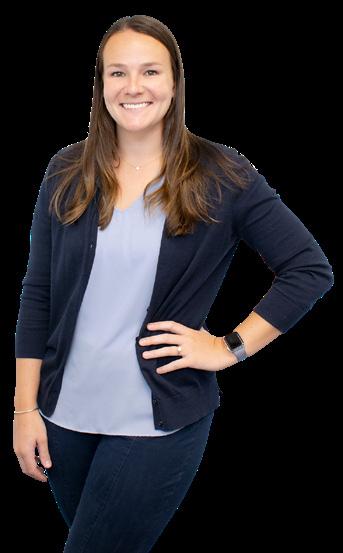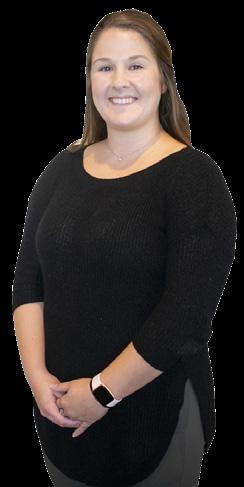
2 minute read
UPCOMING JOURNAL CLUB AND CASE DICUSSION DATES
from April 2023 PULSE
by PTSMC
All meetings are 12:00- 1:00 pm on TEAMS.
Case Discussion dates: 04/04 Spine focus 05/09 Spine Focus 06/06 Spine focus
Journal Club dates: 04/18 Spine focus
05/23 Spine focus
06/20 Spine focus
Click HERE for the full 2023 CD & JC schedule.
Email Danielle.Dunn@ptsmc.com to be added to the meeting group.
The second possibility is a compression of the posterior interosseous nerve. This condition is known as radial tunnel syndrome. This nerve can be compressed in four locations. The two most common locations are within the supinator muscle and the belly of the extensor radial brevis muscle. The lesion is secondary to overuse, particularly in occupations or sports involving repeated pronation and supination. Consider this diagnosis when resisted forearm supination or passive pronation is more painful than resisted wrist extension. Isometric muscle testing of middle nger extension may also be painful. There will likely to be tenderness to palpation over the supinator, and the patient may complain of tingling in hand. Recently it has been found that dry needling can be an e ective treatment for this pathology. Compression of the ulnar nerve at the cubital tunnel is also a good example of weak and painless muscle testing results. The patient may present with hypoesthesia, hyperesthesia as well as weakness of ulnar innervated muscles. Both dry needling and neurodynamic mobilization have been found to be e ective treatments.
Reference:
Ombregt, L. A System of Orthopaedic Medicine. 3rd edition Churchill Livingstone 2013 Lutz,F. Radial Tunnel Syndrome. JOSPT 11(1): 14-17, 1991
Anundkumar, S. E ect of Dry Needling On Radial Tunnel Syndrome: A Case Report. Physiotherapy Theory and Practice. 35 (4): 373-382, 2019
Anundkumar, S. E ect of Dry Needling On Cubital Tunnel Syndrome: A Case Report. Physiotherapy Theory and Practice. 35(4):363-372, 2019
Oskay, D. et al. Neurodynamic Mobilization In Conservative Treatment of Cubital Tunnel Syndrome: Long Term Follow Up Of Seven Cases. 33(2): 156-163, 2010
Welcome to New Auditors!
Cait Ayotte, PT, DPT PTSMC New London
Meghan Blanusa, PT, DPT, OCS

PTSMC Naugatuck
Cait was rst introduced to PTSMC as a student with Alyssa Gri o in East Hampton. After graduating from UCONN’s DPT program, Cait joined PTSMC full-time in the New London o ce during the height of the pandemic, August of 2020. Since then, she has shown a commitment to her patients and a desire to grow in both the clinical and non-clinical spheres. Cait is a DOCS program graduate and is participating in the current LMDP program. She shows a great attention to detail and has a very good understanding of documentation and billing standards that will help her excel in her new role!
Meghan’s PTSMC career started in 2016, when she joined as a PT aide eager to learn, in the Guilford o ce. Her hard work and dedication quickly became evident, and upon graduating from QU’s DPT Program she accepted a position in our Naugatuck o ce. Meghan has continually demonstrated a commitment to growth and excellence. In 2021, she completed PTSMC’s Orthopaedic Residency Program, and in 2022, she passed her OCS certi cation. Meghan truly embodies our "PT for life" philosophy, consistently seeking out opportunities to diversify her clinical excellence.
Cait and Meghan have joined our internal audit team, where they will tackle another area of clinical excellence by ensuring that our clinicians’ charting practices are up to standards.








